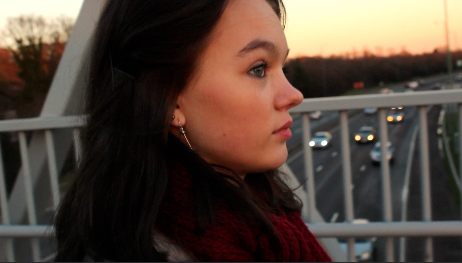In this editing session I made more colour adjustments and correction as well as experimented with adding diegetic sound to the footage to make it appear and sound more realistic.
I began correcting colours in consecutive shots that did not have the same colouring, so the continuity of these shots would be fluid and therefore look more professional. The footage was dark and had a red cast to it, so I counteracted this by bringing out more blue midtones and shadows as well as increasing the saturation and exposure slightly so it would not look as dark as before.
I continued this process on continuous shots that had a different shot cutting in between them. They were differently coloured despite being shot in the same location with the same miss-en-scene, so I adjusted the saturation levels of both shots and corrected the dark reddish cast present in the shots by focusing most of the colouring in the blues and greens on the colour board.
After correcting colours, I began working with sound. As it was my first time adding and adjusting external sounds on Final Cut Pro, I only used one sound.
I added the diegetic sound of a purse being dropped to the corresponding shot, moving it so it would be directly parallel to the action instead of being disconnected and therefore making the footage look amateurish.
I then used the blade tool to cut the sound and make it shorter, as it was too long to correctly match the action in the shot. After this, the sound matched the footage but was too loud and some faint background noise was present, so I used the select tool to lower the volume of the individual sound to match the action but not overpower it.
Evaluation
I feel that this editing was successful, as I had more confidence and experience with the colour correcting, but I still did not do as much as I could have due to inexperience with editing sound. As the sound I edited was successful, I will work on more sounds in the future and improve further.












































.jpg)






